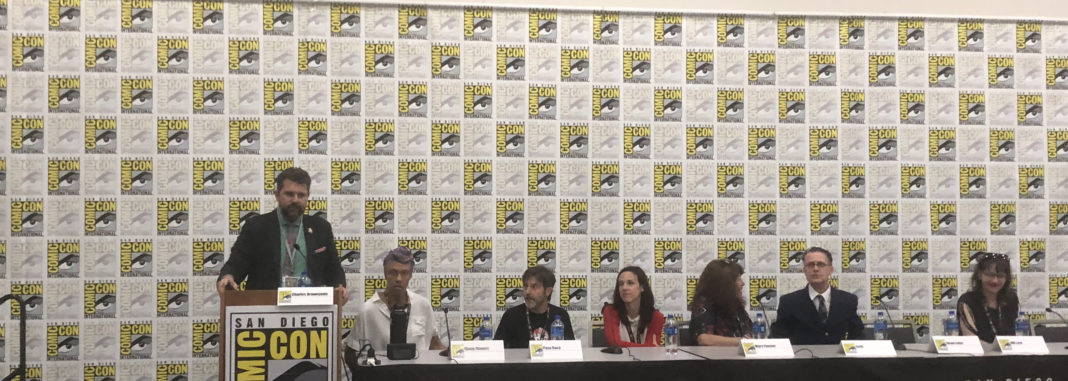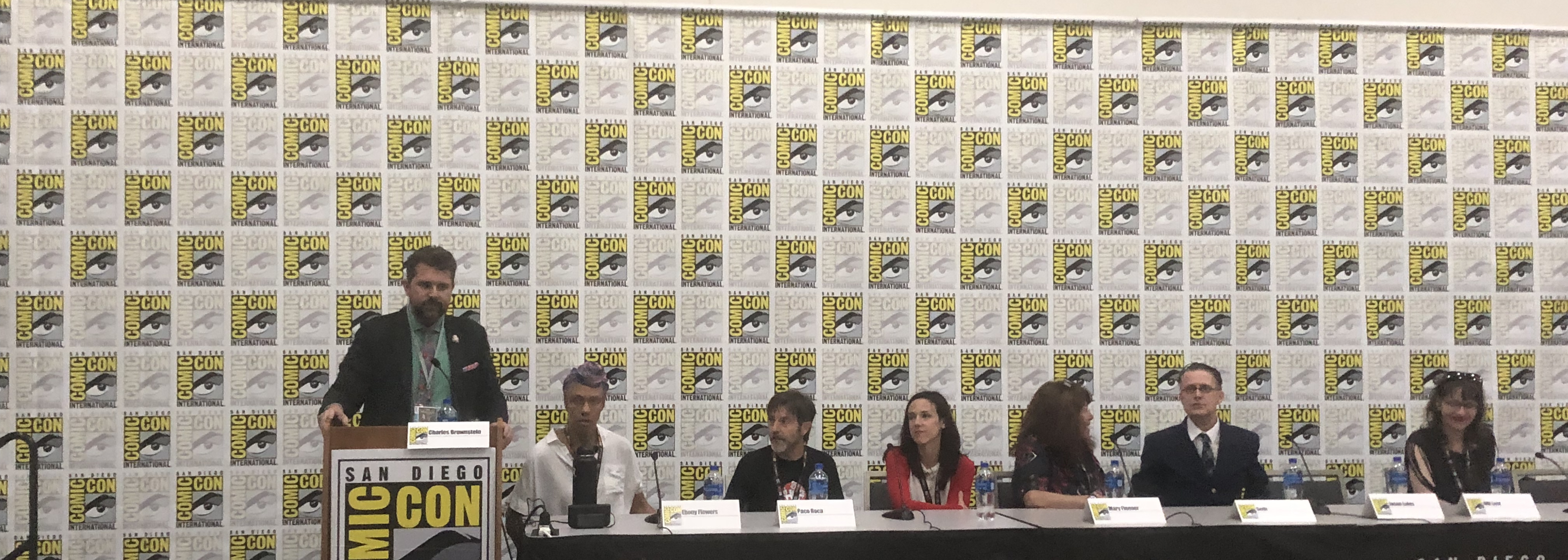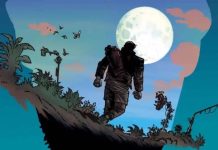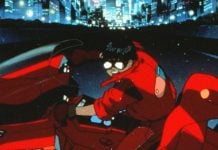What kernels of universal truth do individual comic book stories reveal about human experience and the world at large? That was the topic of Thursday’s “Graphic Memory,” a panel moderated by CBLDF executive director Charles Brownstein and featuring Ebony Flowers (Hot Comb), Paco Rosa (The House), Mary Fleener (Billie The Bee), Seth (Clyde Fans), and Ulli Lust (How I Tried To Be A Good Person). And all these stories arose from personal experiences that left deep impressions: the burning hair of a first perm (Flowers), old photographs hung on a store wall (Seth), the death of a parent (Roca), experiencing nature (Fleener) and human behaviors (Lust).
“If you do documentary comics, it’s always a good experience to talk about it,” said Lust. “You can be the most honest about yourself. It’s difficult to tell secrets of other people.”
Brownstein kicked off the panel discussion with world building and the techniques that each creator employs in creating the fully-formed environments in which readers live.
Seth, whose inspiration for Clyde Fans came from 1960s photographs of two middle-aged men in a beautiful old Toronto store, spoke of the importance of place. Specifically, Seth outlined the importance of mapping out a building in which he would be visiting over and over again on the page.
“What’s interesting about comics is they have an inherent quality about place in them, more than prose, maybe even more than film. In comics, it’s really important that you know where you are when you’re reading the story. Artists take a great deal of effort to place you in a spot where you know what is going on and you move around that spot. You have to know what is going on. The minute you’re confused, you’ve failed. In a comic, if you’re confused, it’s the cartoonist’s fault.”
Flowers revealed that her process world-building comes from her ethnographer’s training. For Flowers, the memory of the burn of a first burn and of fair pulling influenced how she designed the panel layouts in Hot Comb—small panels to mimic the feverish obsession and compulsions of hair pulling to give readers a visual sense of the pain and discomfort.
“There is a saying like you go into a space and you try to make the familiar seem strange. What that means is that you look at this door, and it has an exit sign above it, Why is the exit sign above this door, and why are people moving in and out. You kind of look at it closer, give more attention to it than on an average day, and I think comics takes that to another level. With comics, I would sit there and draw it from memory or from imagination, think of all the details that I think would need to be there in the same way that an ethnographer would…your gross sensations—smell, touch, taste, etcetera—trigger memory in a way that is uniquely human.”
For Roca, world-building was a more visceral experience.
“The way I researched was to actually go back to our own house and stay there, experience it to see the story I had to tell. And that’s when I realized that that house was a project of my father’s and that his life turned around it. There was much more to that house to tell than just a bunch of little memories. In order to tell the story of my father I had to tell the story of that house. Understanding that house—understanding my father—was the key to understanding everything.”
Brownstein continued the conversation by asking each panelist about the techniques and outcomes they hoped to achieve with their stories. There was a spirited discussion on the role that nostalgia and pop culture plays in reliving memory. For Lust, it was access to the thoughts and emotions of the moment.
“The interesting thing is that thoughts, emotions and feelings are not always parallel,” explained Lust. “There are some very paradox distances between what you think, what you do, what you feel. I think that is one of the reasons to make literature—to show in order to make other people understand you.”
In developing his memoir Nothing Lasts, Seth laid out a grid of 20 panels on the page and filled in the spots based on specific memories. He made a rule of avoiding pop culture, even though pop culture played such a significant part of his own life.
“The key thing that struck me was I wanted it to be really specific, but I wanted it to be kind of universal,” said Seth. “We’re living in a very nostalgic culture right now, and I’m ‘Mr. Nostalgia.’ I didn’t want it to be about the books I read or the TV shows I watched because I feel we’re hyper saturated with nostalgia.”
But the memories of his mother, who had received shock treatment, were vividly tied to a television movie he watched with his mother—Snake Pit—that involved shock treatment.
Fleener approached her work as “sympathetic magic”: “Using the cubism and psychedelic stuff, it’s a fine tool when you have anger or surprise or the battling raccoon and coyote. Sure, I could draw realistically with the blood and gore and that stuff, but I thought to use my technique of cubism it would are it more horrifying. Why I use that is not for the sensational graphic kick but I am trying to take it somewhere else where you’re actually in that panel.”
Roca addressed the topic of using wrinkles to depict aging: “Aging is really the memory of the person, so my instant memory is not nostalgia but to search for an identity. My use of wrinkles is about loss of memory and therefore the loss of identity. IN the case of the house, the search for that identity as part of the family but the search for history.”
In the Q&A that followed, the panelists were asked about their artistic influences. Seth drew from the works of Robert Crumb and Jack Kirby even though none of the subject matter appears in his own comics. Lust cited Art Spiegelman for his straightforward storytelling. For Fleener and Roca, it was the Hernandez brothers. And for Flowers, it was Lynda Barry, the mentor who taught her to be curious.
Finally, in response to a question about the meaning of how individual stories apply to readers who have not lived those experiences, Seth summarized the points of the panel in a concluding statement:
“Stories don’t have to be universal because people find their own meaning. If you want to make a story universal, then the answer of course is to make it super specific. That’s the only way you write about life.”









Comments are closed.